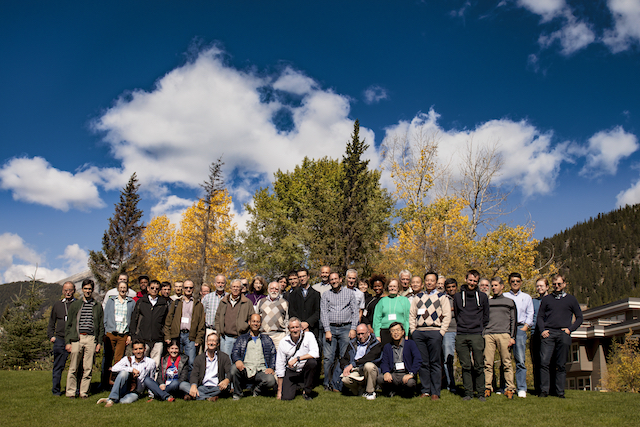Bridges between Noncommutative Algebra and Algebraic Geometry (16w5088)
Organizers
Jason Bell (University of Waterloo)
Michael Artin (MIT)
Colin Ingalls (Carleton University)
Lance Small (University of California, San Diego)
James Zhang (University of Washington)
Description
The Banff International Research Station will host the "Bridges between Noncommutative Algebra and Algebraic Geometry " workshop from September 11th to September 16th, 2016.
Algebraic geometry is the study of solution spaces of polynomials in several variables. This includes the geometry of familiar shapes like parabolas, spheres, and curves in the plane defined by a polynomial. One tries to study the solutions by relating them to other spaces via mappings or parametrizations. This subject is highly controlled by the algebra of polynomials. Geometric statements about the space of solutions correspond directly to algebraic statements about the polynomial equations one is solving.
In noncommutative algebra, applying operations in different orders can yield different results. For example, putting on one's shoes and then putting on one's socks is not the same as doing it in the conventional order. More formally, we have that $x$ times $y$ is not necessarily equal to $y$ times $x$. Noncommutative algebra, just as in the study of the algebra of polynomials, is often motivated by geometric problems and intuition. In this setting, the field is called noncommutative algebraic geometry and it uses the techniques and ideas of (commutative) algebraic geometry applied to noncommutative algebra. For example, we may try to solve noncommutative equations with matrices and try to understand that space of solutions. More concretely, the equation $yx-xy=1$, which describes the quantum mechanical relation between position and momentum, has no matrix solutions, but the equation $yx+xy=0$ has many. In general, an important goal of noncommutative algebraic geometry is to understand the space of solutions to polynomial equations where the variables need not commute. In addition to having immediate applications in noncommutative algebra, there are applications to algebraic geometry and physics. Our workshop deals with the study of noncommutative algebraic geometry and its interactions with other areas of mathematics.
The Banff International Research Station for Mathematical Innovation and Discovery (BIRS) is a collaborative Canada-US-Mexico venture that provides an environment for creative interaction as well as the exchange of ideas, knowledge, and methods within the Mathematical Sciences, with related disciplines and with industry. The research station is located at The Banff Centre in Alberta and is supported by Canada's Natural Science and Engineering Research Council (NSERC), the U.S. National Science Foundation (NSF), Alberta's Advanced Education and Technology, and Mexico's Consejo Nacional de Ciencia y Tecnología (CONACYT)..






